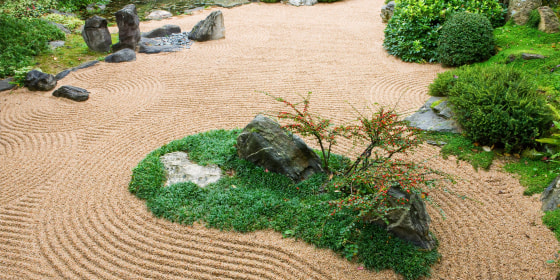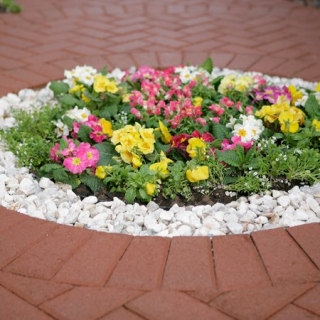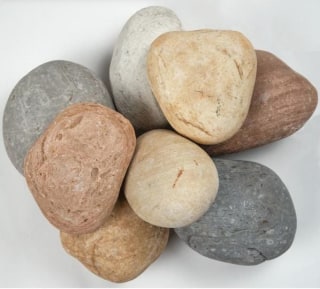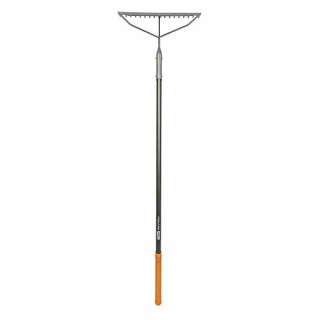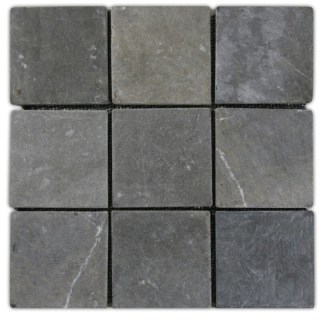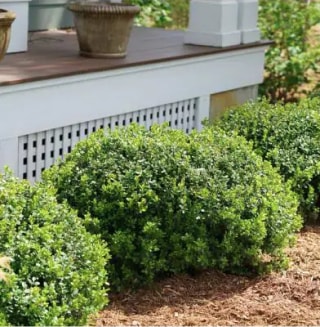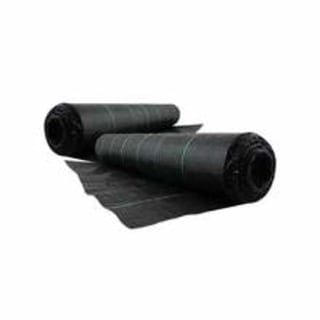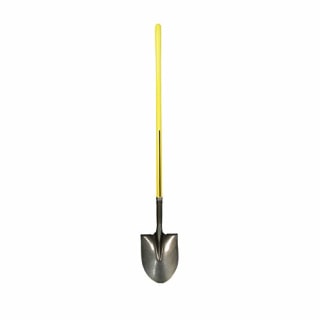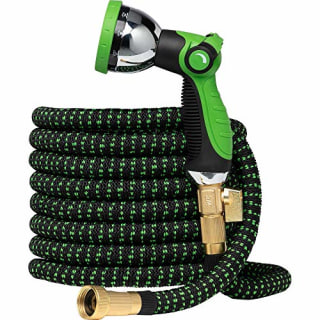Ever since the Morikami Museum and Japanese Gardens reopened in June 2020 after the pandemic forced it to close for a few months, the garden’s curator Heather Grzybek said the number of visitors it sees every day has been “ridiculously high.” She noted that people are looking for an outdoor area where they can spend time with friends and family, and to bring peace and serenity back into their lives, which Japanese gardens are known for facilitating. In addition to visiting Japanese gardens, Grzybek said people are also increasingly interested in creating their own gardens at home, carving out a dedicated space in their yard that promotes feeling calm.
Megumi Kato, marketing director for Portland Japanese Garden, explained that Japanese gardens are designed using specific principles and elements, and they’re distinguished from botanical gardens in that they’re not a collection of individual species. “Rather, a Japanese garden is a composition, intended to be experienced as a single work like an orchestra playing a symphony,” Kato said.
We talked to experts about what defines Japanese gardens, and got tips on how to create a zen garden, one type of Japanese garden, at home. They also recommended resources to use if you want to learn more about Japanese gardening techniques.
It’s a very closely guarded cultural art form.
Heather Grzybek, Curator, Morikami Museum and Japanese Gardens
What are Japanese gardens?
Kato said Japanese gardens are designed to allow people to connect with nature. They create a sense of peace, harmony and tranquility. Grzybek added that Japanese gardens promote being present and mindful in the moment.
“It’s a very closely guarded cultural art form,” Grzybek said. “It’s not about knowing that this rock gets placed here. Everything is intrinsically felt from within, which can be very difficult to teach people, especially in the Western world.”
Kato said there are three principles common across Japanese gardens: stones, water and plants. Stones act as the bones of the landscape, and water is highlighted as the life-giving force. According to Grzybek, the design of Japanese gardens is what distinguishes them from typical botanical gardens, or the patch of flowers and vegetables you may be growing at home. For example, design principles of Japanese gardens include asymmetry and grouping plants in clusters of threes, fives or sevens.
Grzybek said while people can learn about Japanese gardening techniques, it's hard to tell them exactly how to create one. The meaning of the garden stems from people’s personal relationships with them, as well as their intent behind creating the garden. That’s not something that can be taught. Because of this, Grzybek said it’s easier to explain to people what a Japanese garden is not and what it should not include.
“If you just take a lantern and put it in your landscape, that doesn't make it a Japanese garden,” Grzybek said.
How to create a Japanese garden at home
There are many different types of Japanese gardens, including sand and stone gardens. People commonly refer to these as zen gardens because they’re typically found in the courtyards of zen temples, according to Ayse Pogue, senior horticulturist at the Chicago Botanic Garden’s Elizabeth Hubert Malott Japanese Garden. These gardens are called karesansui gardens, which translates to dry mountain water. Pogue said rocks and gravel are used in the gardens to create an abstract scene of mountains and water.
Experts agreed that zen gardens are one of the easiest types of Japanese gardens to create at home. These simple gardens promote a meditational feeling and are centered around rock arrangements. You can use sand or gravel to fill the base of your zen garden, but experts recommended gravel over sand since sand can be messy outdoors, especially with wildlife.
“Dry gardens encourage the viewer to be fully present in the moment and experience a state of stillness, which is in contrast to a typical garden that would stimulate the senses,” Pogue said.
Designing a zen garden
Grzybek said the first step to planning a zen garden is to visit one, if you can. This allows you to familiarize yourself with what zen gardens look like and what different elements are featured in their designs. Pogue also recommended utilizing online resources like the North American Japanese Garden Association, and reading the book “Sakuteiki,” the oldest published Japanese text on gardening. Grzybek, who also recommended the book, called it “the Japanese garden Bible.”
Key features of zen gardens
Pogue said zen gardens are typically small and enclosed, and they’re created with natural materials. The gravel in the garden usually features a border around it, and the garden is typically devoid of plants other than a small tree, fern or shrub, making them low maintenance, according to Grzybek. She said zen gardens are abstract and can represent a different feeling for everyone. Pogue noted that the garden usually does not include decorations, pots or planters. Its simple design is intentional to “move the viewer from a cluttered mind to a state of focused mind,” according to Pogue.
The specific type of gravel, plants and rocks you add to your zen garden depends on where you live, according to Grzybek. Part of Japanese gardening is using what’s available to you and what’s native to your area. Grzybek recommended keeping two ideas in mind when designing your garden: the simpler the better, and less is more.
Here are the basic elements you need to create a zen garden, according to experts’ guidance. They also shared explanations for what each element symbolizes.
Gravel
The gravel in a zen garden represents water. Grzybek said the gravel should not be colorful, so granite chip gravel works well, as does small white pea gravel.
Boulders or larger rocks
Adding boulders or larger rocks to the gravel symbolizes islands in the middle of the ocean. Grzybek said you can use any boulders or large rocks you can find, so long as they’re not colorful.
Rake
Using a rake, you can create a design in the gravel, which symbolizes currents in the ocean. For example, if you raked rings around the boulders, it would symbolize waves crashing up against an island, Grzybek said.
Tiles
Traditional zen gardens use Japanese roof tiles as their border. But Grzybek said this type of tile is hard to find, so she suggested natural-looking tiles like slate, bluestone and flagstone as an alternative. She advised against using pavers, since they give off the feeling of a more Westernized garden.
Plants
Plants represent mountains or islands in the garden. Kato said trees typically found in zen gardens include Japanese maples, black pines and red pines. Other plants include Japanese pieris, boxwoods, azaleas and camelia, in addition to moss and bamboo. Overall, the plants should not have big leaves or bold colors. Pogue said the color palette of the garden is monochromatic, but plants add texture, especially as they bloom throughout the year.
Other tools you might need for your zen garden
Landscape fabric
While zen gardens are low maintenance, Pogue said one of the ways you’ll have to care for it is by removing weeds that peek through the gravel. To prevent weeds from growing, lay down landscape fabric before adding gravel to your zen garden. The landscape fabric acts as a weed barrier between the earth and gravel, and you can cut it to fit around plants and into the shape of your choosing.
Round Head Shovel
To plant the trees, shrubs and other greenery in your zen garden, you’ll need a shovel. In our guide to gardening tools, experts recommended using a round head shovel specifically to dig large holes and move soil. This shovel has a 48-inch handle made from fiberglass and its head is constructed from tempered steel.
Pruner
In a zen garden, Pogue said most plants are pruned in uniform rounded shapes, which helps create the feelings of stillness and calmness. This hand pruner has 6.5-inch blades that stay sharp over time and help you achieve precise cuts when tending to plants like shrubs and small trees.
Garden hose
You’ll have to water the plants in your zen garden, and experts recommended using a hose with a shower nozzle in our guide to raised garden beds. This hose comes in four length options — 25, 50, 75 and 100 feet — and its nozzle offers 10 different spray patterns, including shower.
Catch up on Select's in-depth coverage of personal finance, tech and tools, wellness and more, and follow us on Facebook, Instagram and Twitter to stay up to date.

